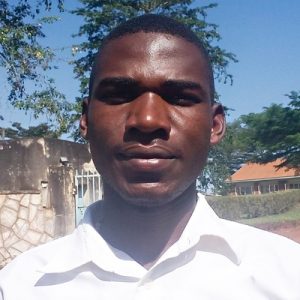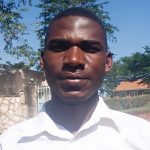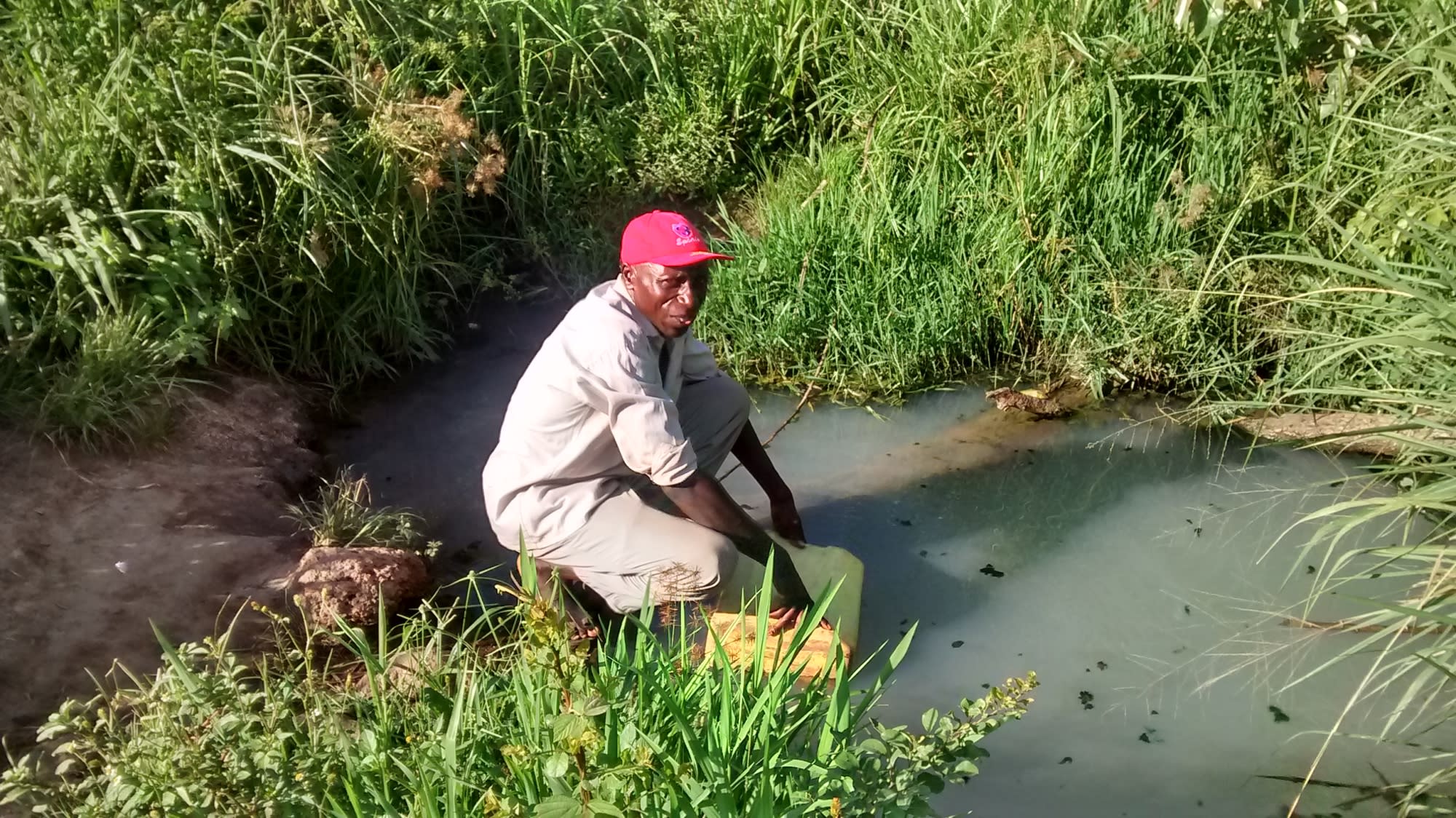In an effort to get you the most accurate glimpse of life for these 330 people we plan to serve with a new water point, we have updated the narrative that was previously posted on this page.
This project was previously slated to be a hand-dug well, but bedrock in the area is requiring us to bring in a drill rig to break through and install a borehole well.
Most people in Nyakarongo Center collect their water from an open source, which is dirty and dangerous to drink. This water even causes skin rashes after people bathe with it. Drinking this water causes diarrhea to be a daily norm.
Animals come and go to drink from this open water source, too. There are so many different contaminants: mud washes into the water when it rains, women do their laundry right there and the soap and dirt washes back into the water, and the containers people dunk into the water are filthy on the outside.
Fewer than half of households have latrines. Most of the latrines in this village are ordinary unlined pits latrines. They are mainly contracted with locally available materials, including mud.
Nyakarongo is located at the border of Kiryandongo and Masindi district. The community’s predominant activity is farming. A day in this village starts with farming in gardens. Most people eat the leftover food from dinner as breakfast - the parents as they go to the farm and the children as they walk to school.
During sunny days, the women or female siblings who are no longer going to school come back home to prepare lunch on sunny days. They return home with firewood, water, and food for the day's cooking. The common types of food include cassava, potatoes, and maize. Millet bread with meat is a delicacy for special meals just like many other communities in western Uganda.
After lunch, the ladies remain at home to prepare for supper. In this village supper is the main meal of the day hence given a lot of attention. Preparing some meals takes more than four hours depending on the distances to the water sources, type of food, size of the family, the nature of the cooking, fuel used, and the weather conditions.
Meanwhile, their male counterparts are either take on informal day-labor jobs for pay or run a small business in the trading center. Others go for socializing (drinking alcohol and gambling). Christianity is the dominant religion so on Sundays people take a rest from the daily routines to go to church.
Here’s what we’re going to do about it:
Training
Training’s main objectives are the use of latrines and observing proper hygiene practices since these goals are inherently connected to the provision of clean water. Open defecation, water storage in unclean containers and the absence of hand-washing are all possible contaminants of a household water supply. Each participating village must achieve Open Defecation Free status (defined by one latrine per household), prior to the pump installation for a shallow hand-dug well.
This social program includes the assignment of one Community Development Officer (CDO) to each village. The CDO encourages each household to build an ideal homestead that includes: a latrine, hand-washing facility, a separate structure for animals, rubbish pit and drying rack for dishes.
We also implement the Community Led Total Sanitation (CLTS) approach with each of our village partners. This aims to improve the sanitation and hygiene practices and behaviors of a village. During these sessions, village leaders naturally emerge and push the community to realize that the current practices of individual households – particularly the practice of open defecation– are not only unhealthy but affect the entire village. CLTS facilitates a process in which community members realize the negative consequences of their current water, sanitation and hygiene behaviors and are inspired to take action. Group interactions are frequent motivators for individual households to build latrines, use the latrines and demand that other households do the same.
New Borehole
We first thought we would be able to dig a new hand-dug well in this part of Nyakarongo. However, there is hard bedrock about 10 feet below the surface. We will be bringing in a drill rig to drill a borehole instead.
We are also rehabilitating another well on the other side of Nyakarongo to make sure there is enough clean water for everyone: Nyakarongo Community.
Improved Sanitation
The aim is that all households own an improved latrine. Many households do not use a latrine but use the bush. Due to open defecation, feces are spread all over the village. This leads to waterborne diseases and contamination of groundwater and surface water. Our aim is that the community is able to live a healthy life free of preventable diseases. We endeavor that at the end of our presence in the community, people will have both access to sustainable, clean water and access to sanitation. We have now organized families to form digging groups for latrine construction, and empowered them with tools to use.

 Borehole Well and Hand Pump
Borehole Well and Hand Pump
 Rehabilitation Project
Rehabilitation Project























